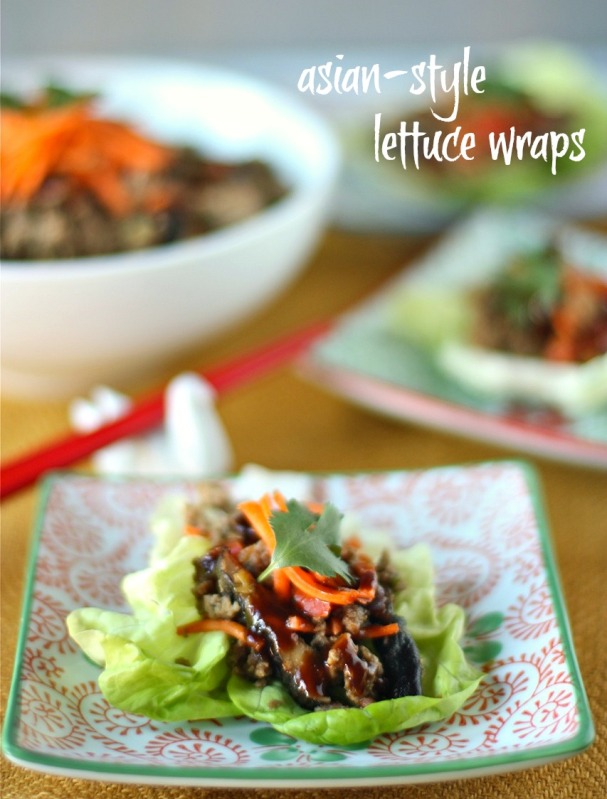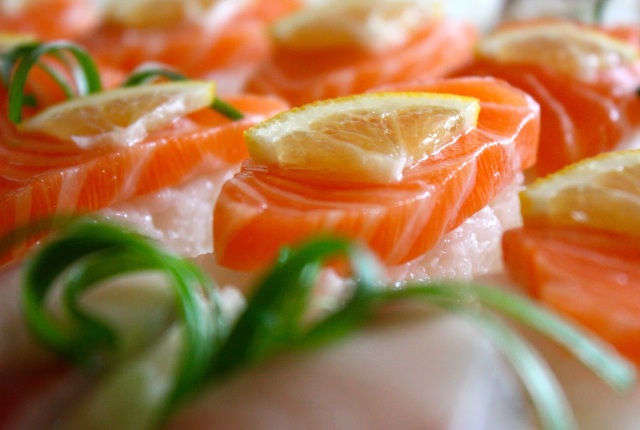These Asian-style lettuce wraps make a great appetizer for your next party or a light, yet filling, main dish your entire family will enjoy. Filled with lean ground turkey, shiitake mushrooms, water chestnuts, bell peppers, and carrots, they’re healthy and full of flavor. Continue reading
Tag Archives: Japanese
chicken karaage: japanese fried chicken
I’ve always had a thing for fried foods: french fries, onion rings, corn dogs, and doughnuts. You name it, if it’s fried, chances are good that I’d love it. Without a doubt, my favorite fried food is fried chicken. When I make it at home, I used to use a traditional Southern fried chicken recipe with buttermilk until I discovered chicken karaage, Japanese fried chicken, or JFC, for short. Now, it’s my go-to fried chicken recipe. Continue reading
sumo citrus slices with crème fraîche, pistachios, and mint
Sumo Citrus. Have you heard of it? I hadn’t until I walked into Whole Foods a couple of weeks ago and was greeted with a beautiful display of these uniquely-shaped and brightly-colored fruit with a thick, dimpled peel and distinctive “top knot”. These large mandarin oranges are seedless, easy to peel, and very sweet. They’re juicy, but not so much that the juice drips down your arm when you peel them like some oranges can do.
fried shishito peppers with sea salt and lemon
I have never liked peppers, partly because I don’t have a high tolerance for spicy foods and because I don’t really care for their taste. When I do use them, mostly in the form of bell peppers, it is mainly to add color to stir-fries, salads, and kabobs. Then, last year, I discovered one exception to my great dislike for peppers in the form of the jalapeño. They have a moderate “kick” to them, but they’re not intense, especially when seeded and their membranes are removed. They became a slight obsession, even planting them in my garden so I could have a steady supply of them. Continue reading
salmon and yellowtail nigiri sushi
My husband, Chris, and I just got back early this afternoon from a quick trip to Portland, Oregon where we relaxed, explored the beautiful city, and, of course, ate to our hearts content. I will post a more-detailed trip report later, but Salt & Pepper Ribeye, Peruvian Lamb Shank in a Cilantro-Black Beer Sauce, and a Gorgonzola, Caramelized Onion and Bacon Burger were some of the highlights. Continue reading
manzanar national historic site
On our drive down from Mammoth last week on US-395, we stopped at the Manzanar Natiional Historic Site. Ironically just a short distance from the town of Independence, Manzanar was one of ten relocation centers where Japanese Americans were incarcerated during World War II. There are not many structures left, but you can see cement foundations, outlines of gardens, and signage of the buildings that once stood there, still surrounded by barbed wire fences. A replica of one of the eight guard towers that were used by military police equipped with search lights and sub-machine guns stands as a reminder that the Japanese Americans were held there against their will, and not “for their protection.” The desolate landscape against snow-covered mountains was an eerily beautiful and moving sight, almost haunting, really.
This dark chapter in American history began in 1942 when the U.S. government under President Roosevelt enacted Executive Order 9066 authorizing the Secretary of War to declare areas of the United States (mostly in the western US) as military areas “from which any or all persons may be excluded.” The Executive Order also established the War Relocation Authority, which paved the way for the creation of relocation camps which would house over 100,000 Japanese Americans, most of whom were American citizens by birth or were willing to become citizens but were denied the opportunity due to the immigration laws at the time. No charges were ever brought against any of the internees, nor were there any trials or due process, as prescribed by the Constitution of the United States.
Manzanar resembled a small town housing up to 11,000 prisoners and was self-sustained in many ways. The camp had its own hospital, schools, farms, co-ops and more. There were dances and baseball games. Most people held jobs within the camp or helped with the American war effort by making camouflage nets. Despite the severity of the circumstances they endured, these (mostly) American citizens of Japanese ancestry made the most of their imprisonment and lived hopeful lives even though many had lost everything.
As America celebrated the 235th anniversary of its independence, I thought it was fitting to end with this quote inscribed on a plaque by the guardhouse that says:
May the injustices and humiliation suffered here as a result of hysteria, racism, and economic exploitation never emerge again.
I know this is more serious than most of my posts, but I was truly moved by visiting this site. If you are ever driving up US-395 heading towards Mammoth, I urge you to stop at Manzanar to learn about the courage and the indomitable spirit of the Japanese Americans and the fragility of the freedom and liberty we sometimes take for granted.
© Daisy’s World. All rights reserved. Unauthorized use and/or duplication of this material without express and written permission from this blog’s author and/or owner is strictly prohibited. Excerpts and links may be used, provided that full and clear credit is given to Daisy’s World with appropriate and specific direction to the original content.







